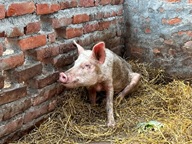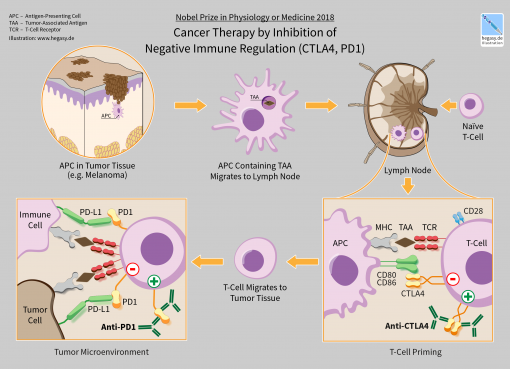Dr. Sayeed Anuwar
Veterinary Officer, MVU
Block Veterinary Dispensary, Mazbat, Udalguri
Abstract:
Mycoplasma arthritis, caused by Mycoplasma hyosynoviae, is a notable infectious disease affecting pigs, particularly in growing animals. This disease leads to considerable economic losses due to its impact on animal mobility, productivity, and overall health. The pathogen, commonly found in the upper respiratory tract, becomes pathogenic under stressful or immunosuppressive conditions. This article aims to present a comprehensive review of Mycoplasma arthritis in pigs, particularly under field conditions where clinical examinations and laboratory facilities are unavailable. The study emphasizes the importance of field-based diagnosis, treatment strategies, and the need for practical measures to mitigate its impact in resource-limited settings.
Key Words: Mycoplasma arthritis, Mycoplasma hyosynoviae, pigs, field diagnosis, lameness, treatment
Introduction:
Swine farming plays a pivotal role in livelihood generation for the farmers, especially in the rural areas. Among various infectious diseases affecting pigs, arthritis is a common ailment that hampers productivity and animal welfare. Mycoplasma arthritis, caused by Mycoplasma hyosynoviae, is a prevalent cause of lameness and joint swelling in growing pigs. This disease primarily affects pigs between 10 to 24 weeks of age, often coinciding with stress-inducing events such as transportation, overcrowding, or changes in feed. The pathogenicity of Mycoplasma hyosynoviae is influenced by environmental stressors, making management conditions a critical factor in disease manifestation. The lack of proper diagnostic facilities in remote areas poses significant challenges in identifying and treating the disease. Consequently, field veterinarians must rely on clinical observations, history, and response to treatment for diagnosis.
Clinical Signs:
During my field visits, I encountered several cases of lameness in pigs where proper clinical examinations were not feasible. The primary method of diagnosis relied on observing the pigs’ clinical presentations. The affected pigs initially exhibited subtle signs such as reluctance to move and a stiff gait. As I closely monitored the animals, the swelling of the joints, particularly the fetlock joints, became more prominent. Painful movement was evident, with some pigs struggling to rise and adopting a characteristic dog-sitting posture to alleviate pressure on their limbs. Lameness often affected multiple limbs symmetrically, though in some cases, only one limb was involved. Fever and reduced appetite were common, further deteriorating the pigs’ overall health. Without access to diagnostic facilities, careful observation of the pigs’ posture, gait, and behaviour became the cornerstone of my diagnostic approach.
 .
. 
Swelling of the Joints Dog sitting posture to alleviate the pressure on the fetlock joint
Differential Diagnosis:
Under field conditions, differentiating Mycoplasma arthritis from other causes of lameness is challenging due to the lack of laboratory facilities. However, certain distinguishing features can aid in diagnosis. Streptococcal arthritis caused by Streptococcus suis typically presents with purulent joint swelling and high fever, often accompanied by neurological signs. Erysipelas arthritis, caused by Erysipelothrix rhusiopathiae, is characterized by non-suppurative arthritis, fever, and the presence of diamond-shaped skin lesions. Glässer’s disease, caused by Haemophilus parasuis, presents with polyarthritis, polyserositis, and meningitis in weaned pigs, often affecting multiple systems simultaneously. Mycoplasma polyarthritis due to Mycoplasma hyorhinis primarily affects younger piglets and presents with fever and polyarthritis. Traumatic arthritis is usually unilateral and associated with a history of injury, while osteochondrosis presents with non-infectious lameness without joint swelling. Despite the absence of confirmatory tests, a combination of clinical history, environmental factors, and careful observation can help narrow down the differential diagnosis.

After 5 days post-treatment
Results and Discussion:
In field settings, the management of Mycoplasma arthritis relies heavily on empirical treatment. I started the treatment protocol based on a tentative diagnosis. The sow was treated with Tolfenamic acid at the dose rate of 2 mg/kg body weight (Hannan et al., 1997) and Tylosin at the dose rate of 2 mg/kg body weight (Couper et al., 2006). The treatment continued for five days, and by the end of this period, the animal recovered successfully. Antimicrobial therapy is the cornerstone of treatment, with drugs that penetrate joint tissues being the most effective. Tiamulin, Lincomycin, Enrofloxacin, and Tylosin have shown promising results in resolving clinical signs (Maes et al., 2008). The choice of an antibiotic often depends on availability and cost. The duration of treatment typically ranges from five to seven days, with clinical improvement observed within the first few days. Non-steroidal anti-inflammatory drugs (NSAIDs) such as Meloxicam and Tolfenamic acid are essential adjuncts to alleviate pain and inflammation, improving the pig’s mobility and welfare. Supportive care, including proper nutrition, provision of clean water, and minimizing stress and providing soft bedding materials play a vital role in recovery. The isolation of affected pigs is recommended to prevent further spread of the disease and allow for better monitoring.
In many field cases, the response to treatment serves as a diagnostic tool. A positive response to antibiotic and anti-inflammatory therapy within a few days supports the diagnosis of Mycoplasma arthritis. However, failure to respond may necessitate reconsideration of the differential diagnosis or the use of alternative antibiotics. The importance of early intervention cannot be overstated, as delayed treatment can lead to permanent joint damage and increased mortality.
Conclusion:
Mycoplasma arthritis remains a significant challenge in pig farming, particularly in resource-limited settings where diagnostic facilities are scarce. Field veterinarians must rely on clinical acumen, history, and empirical treatment to manage the disease effectively. Early recognition and appropriate antimicrobial therapy, combined with supportive care, are essential to mitigate the impact of the disease. Future efforts should focus on improving access to diagnostic facilities, developing preventive strategies, and enhancing the overall management of swine herds. Strengthening veterinary capacity in rural areas will play a critical role in reducing the burden of Mycoplasma arthritis and improving the livelihoods of pig farmers.
References:
Hannan, P. C. T., et al. (1997). Antibiotic treatment of Mycoplasma infections in animals: A review. The Veterinary Journal, 153(1): 41-50.
Maes, D., et al. (2008). Mycoplasmal infections in swine: Mycoplasma hyopneumoniae and Mycoplasma hyosynoviae. Veterinary Research, 39(6): 45.
Taylor, D.J. (1999). Pig Diseases. Cambridge University Press.
Thacker, E.L. & Minion, F.C. (2012). Mycoplasmosis in swine. Veterinary Clinics of North America: Food Animal Practice, 28(3): 531-546.
Zimmerman, J.J., et al. (2012). Diseases of Swine. Wiley-Blackwell.



